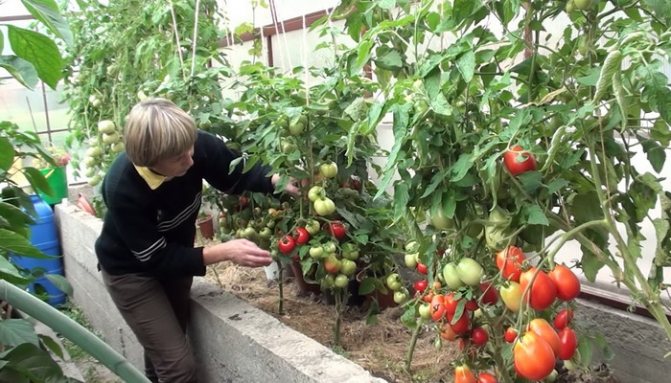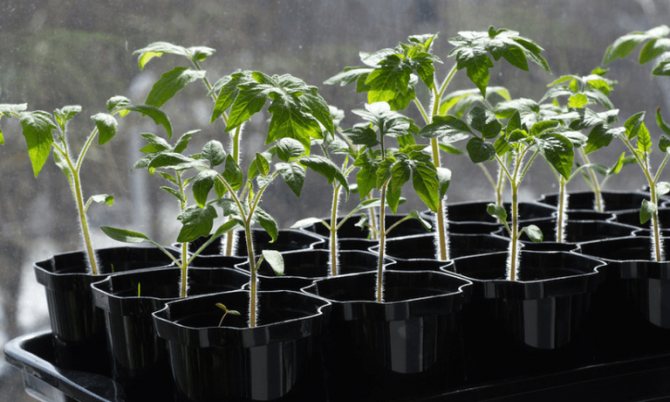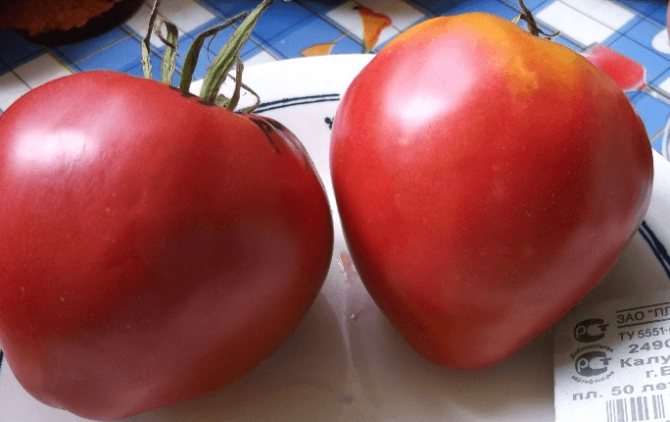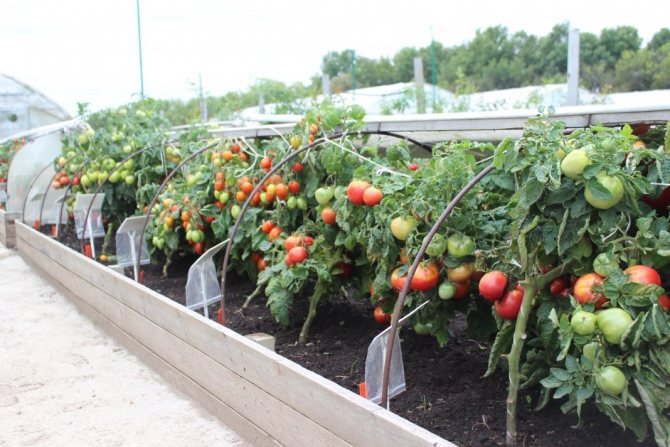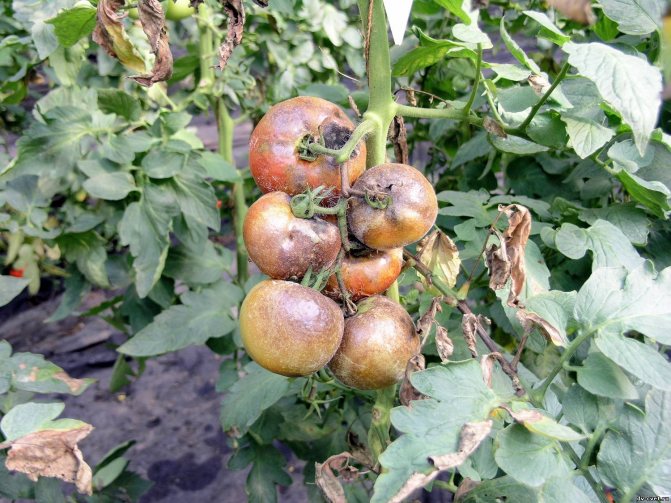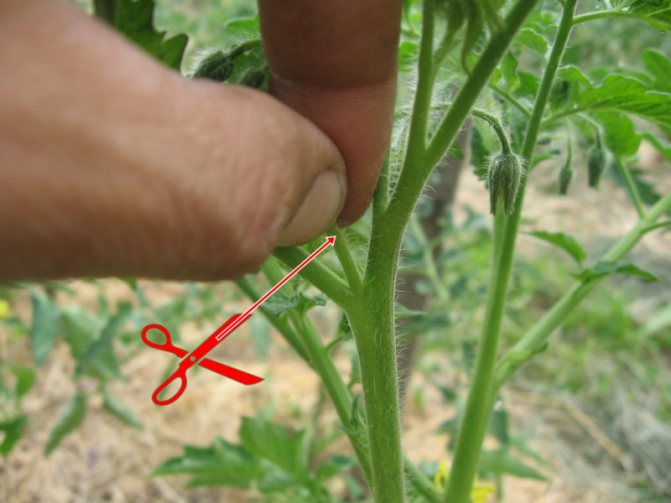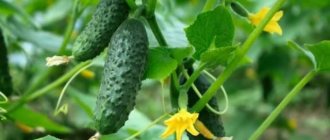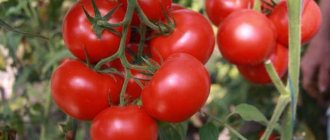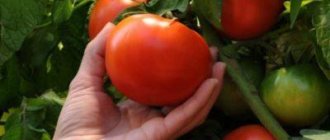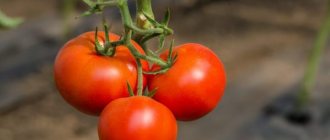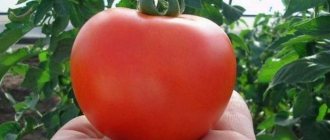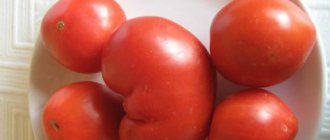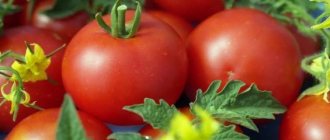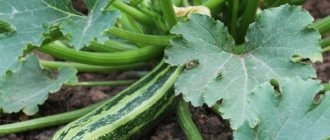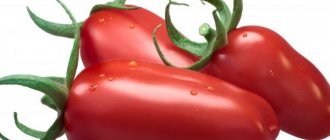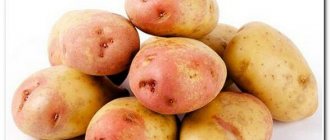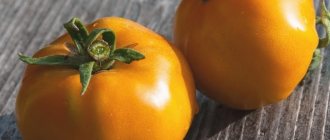"Miracle of the Earth" is a Russian tomato variety bred by VN Dederko, a Novosibirsk entrepreneur. In 2002, the tomato appeared on the market, and in 2006 it was included in the register of varieties. It is very popular among pink varieties, although some gardeners note that they grow red tomatoes.
Dear Readers! For you, we have created communities in social networks, in which useful articles and interesting ideas are published several times a day! Subscribe and receive useful content in a convenient format!
In the state register it is listed as a soil, but, according to gardeners, it grows well in greenhouses.
Now the seeds of this tomato are being released. But beware of counterfeits.
Gardeners note the high yield of the variety and the excellent taste of the fruits, but more on this below.
Note! Gardeners often confuse the varieties "Miracle of the Land" and "Miracle of the Ukrainian Land". These are different varieties and they also go under different names in the state register. Due to the similarity of the names, varietal characteristics can be confused. Basically, gardeners' reviews can be found on the Sib. Sadovskoe "Miracle of the Earth"
Description and characteristics
"Miracle of the earth" is referred to as indeterminate, mid-season varieties with large fruits. Let's consider each varietal characteristic.
Bushes
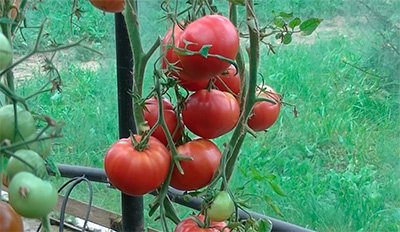
The variety is tall. The height of the bush depends on the growing conditions and starts at 170 cm. Standard bush.
The fruits hang on the bush like bunches. A bush can form up to 10-14 bunches capable of fruiting. Each can have 6-8 fruits.
In order for the plant to withstand the weight of the tomatoes, it must be tied up. The foliage is dark green in color, of medium size.
It is desirable to form a bush in 1-2 trunks. Make a fork under the 1st hand. The fruit cluster of a tomato is branched.
Flowers and fruits
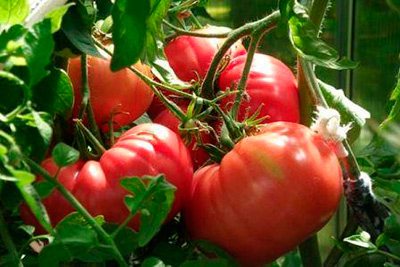

The variety is mid-season, the harvest can be obtained in 95-120 days after planting. The fruits are pink. Weighing 300-500 gr.
Under favorable conditions, 1 tomato can weigh up to 1.2 kg.
To obtain larger fruits, some gardeners carry out the so-called rationing, leave 1-2 fruits on one brush, cutting off the flowers.
When ripe, no green or white spots are formed near the stalk. The first harvest is larger than the next one in the season. The ripening period of the fruits is extended, so harvesting can be done for a long period.
Fruits contain 6-8 chambers, 5-7% dry matter. The shape of the fruit is rounded, slightly ribbed, but in some areas it is heart-shaped (but most likely this is the "Wonder of the Ukrainian Land" variety). The fruits are not prone to cracking.
The fruit has few seeds. The taste of the tomato is sugary, slightly watermelon.
Yield
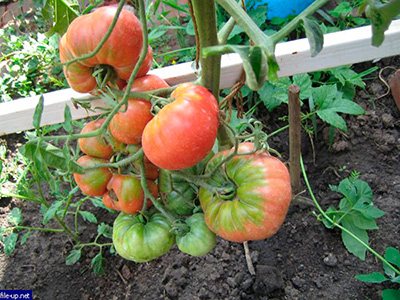

Productivity from one bush is on average 4 kg.
It all depends on the growing conditions. With the creation of favorable conditions and the presence of a long daylight hours, which is typical of the southern regions, from 1 sq. m you can collect up to 20 kg of tomato.
In the northern regions, 11-12 kg can be obtained from a similar area.
Transportability
Tomatoes do not have a high keeping quality, so transporting them is not a good idea. Nevertheless, the skin is dense and if the place of sale is not far away, then it is suitable for sale. It is advisable to eat or process tomatoes immediately.
Growing areas
The best place for growing is the southern regions of Russia (Krasnodar Territory, North Caucasus). In greenhouses, it was grown in colder areas. Residents of Novokuznetsk and Kirov were satisfied with the results. Also in the open field, the variety has shown itself well in Belarus and Kazakhstan.
Attention! The variety is not hybrid. Every year there is an opportunity to collect seeds while maintaining all the varietal qualities of the tomato.
Advantages and disadvantages
The main advantage of the Miracle of the Earth tomato is its high yield. In addition, the advantages include such characteristics of the variety as:
- excellent taste;
- versatility of fruit use;
- good immunity to many diseases;
- fruits do not crack on bushes;
- resistance to the vagaries of the weather;
- seeds can be harvested for further sowing;
- long shelf life of the crop;
- undemanding to growing conditions and agricultural technology.
The only big drawback of the variety is its increased exactingness in special care. This refers to the need for a garter of plants, the device of all kinds of props and protection from the winds. This disadvantage is due to the height of the plant and the huge size of its fruits.
Video review
Benefits
- Great taste of tomatoes;
- High yield among pink tomato varieties;
- It tolerates drought, short-term lack of irrigation does not affect the yield;
- Does not crack on bushes;
- The fruits have an even shape and an attractive appearance;
- Tomatoes taste good and have high tasting ratings;
- Resistant to diseases when grown outdoors;
- You can collect planting material yourself;
- When ripe, no pink or white spots are formed near the stalk;
- Has a prolonged fruiting period.
Photo "Miracle of the Earth"
Planting and breeding
The variety has an average ripening time, this imposes its own nuances on the time of planting seeds.
We sow the seeds
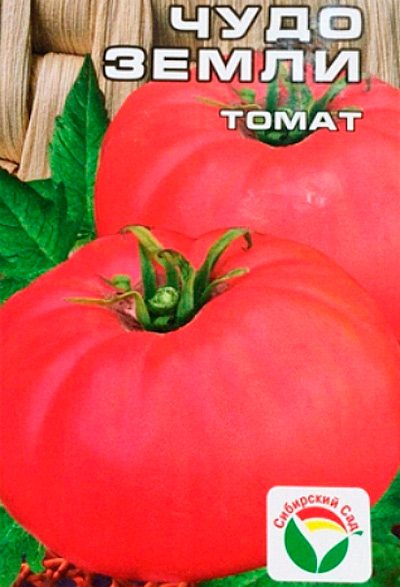

So, if you want to get a tomato crop a little earlier, then you need to sow seeds in February 20-23. If you want to get ripe tomatoes a little later, then we plant seeds in early March.
The desired time for sowing seeds is 55-65 days before planting directly into the ground.
You can sow seeds dry, but, according to some summer residents, this approach gives more mediocre results than preliminary soaking of seeds for a day in Epin.
If the seeds are harvested on their own, we recommend soaking them for an hour in a weak solution of potassium permanganate before planting in the ground. Then put the material to soak in water at room temperature overnight.
After soaking, you can immediately plant the seeds in the ground, or you can put them in wet gauze and wait until they hatch, and then dive them into the ground.
How to plant seeds is a personal matter for every gardener, you can experiment and choose what works best for you.
After the seeds are sown in the container, cover the container with the seedlings with a plastic bag or film. Then we put the future seedlings in a dark place until the first seeds hatch. Next, we transfer our plants to a place where there is enough sunlight.
Landing in the ground
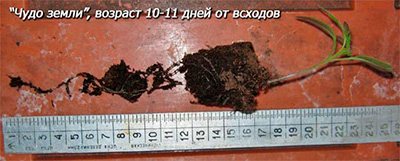

So, our seedlings have grown. We take it out on the street every day, about 1-2 weeks before disembarkation.
Plants can be dived when they have 2-3 true leaves.
We plant tomatoes at the rate of 2-3 plants per 1 m2, no more. Otherwise, they may lack nutrients. If the plant is planned to be formed into 1 stem, then planting up to 4 bushes is allowed per meter.
We adhere to the planting scheme 50 by 60 cm.
Video
An introductory video clip about the "Miracle of the Earth" tomato variety can be seen below:
And in the table below you will find links to articles on tomatoes of a wide variety of ripening periods that you may find useful:
| Super early | Mid-season | Medium early |
| White filling | Black moor | Khlynovsky F1 |
| Moscow stars | Tsar Peter | One hundred pounds |
| Room surprise | Alpatieva 905 a | Orange Giant |
| Aurora F1 | Favorite F1 | Sugar Giant |
| Severenok F1 | La La Fa F1 | Rosalisa F1 |
| Katyusha | Right size | Em Champion |
| Labrador | Size free | Sultan F1 |
If you find an error, please select a piece of text and press Ctrl + Enter.
Care "Miracle of the earth"
The care consists of standard procedures. We will describe each in more detail below.
Stepson and garter
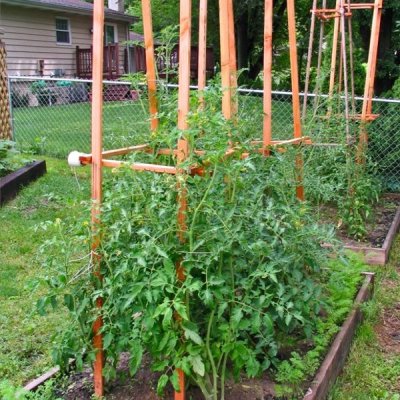

Since the variety is tall, it is recommended to install supports already when planting seedlings and tie up bushes as the plant grows.
The support must be strong, as the tomato grows up to 2 m.
This variety needs pinching. Initially, one stem is left, maximum 2.
The stepson is removed when he reaches a length of 7-8 cm. The procedure is repeated weekly. After the second decade of July, pinching stops.
The lower leaves also break off, everything that is below 30 cm from the ground.
Watering
The frequency of watering directly depends on the weather conditions. If the climatic conditions are arid, then the plant should be watered every 2 days, as the soil dries up. If the humidity is high, then less often.
It is advisable to mulch the soil under the tomatoes. The frequency of watering depends on whether there is mulch on the ground or not. If this procedure is performed, then it is recommended to water this variety of tomatoes weekly, or once every 10 days.
Although some gardeners recommend watering the tomatoes as little as possible and only as needed, then the tomatoes will taste better.
It is advisable to carry out the procedure either early in the morning or in the evening.
Fertilization and feeding
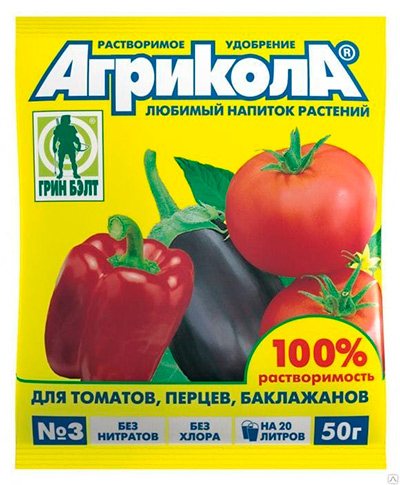

When planting a plant, a little ash can be added to the hole.
At the initial stage of plant growth, when green foliage is formed, it is desirable to fertilize the plant with nitrogen-containing dressings.
Urea (urea) or any complex fertilizers are suitable.
From available tools, you can use ammonia, which can be bought at the pharmacy. We use one bottle of liquid for 10 liters of water. Water the plant with the resulting solution.
During flowering, the plant can be sprayed with a physiologically active preparation "KKM 1". This helps to form more ovaries and enhances the plant's immunity.
When the ovaries form, stop using nitrogen. And you can fertilize the plants with Agricola.
Interesting! This variety of tomatoes can be harvested semi-ripe, when frost sets in, they can ripen at home.
Weeding and loosening
After watering, if a crust appears on the soil on the soil, then the access of air to the roots stops, in this case the soil must be loosened.
Tomatoes must be hilled 3-4 times per season, creating a kind of slide into which the plant will take out additional roots and receive more nutrition.
Growing in a greenhouse
To grow the "Wonder of the Earth" in a greenhouse, you need to create certain conditions:
- Air humidity should be in the region of 55-60%, otherwise the plant can get sick with late blight;
- The air temperature should be around 27-30 degrees;
- It is necessary to pollinate tomatoes.
Growing seedlings
We admit only the seedling method of cultivating the Miracle of the Earth tomato. Even in southern latitudes, this variety, sown directly to the garden bed, will not be able to fully mature.
Sowing
The estimated time of sowing the tomato variety Miracle of the Earth is taken, counting back from the expected day of moving into the ground in the garden for about 55-65 days. Roughly the sowing dates for this variety fall at the end of February and the first half of March. The exact date may vary in different regions, since the climate in our vast homeland is very different.
First, the seed material of this tomato variety is calibrated by carefully examining and removing all small, damaged, twisted, broken specimens.Then the remaining grains are poured into a glass with lukewarm salt water (30-40 g per liter). In this case, empty and non-viable seeds will remain floating on the surface, and full-bodied and mature ones will fall to the bottom. Settled grains must first be washed in running water, rinsing off the remaining salt, and then disinfected in Fitosporin (according to the instructions) or potassium permanganate (weak pink solution).
To accelerate the emergence of seedlings, the Miracle of the Earth will help seed treatment with any growth stimulant drug.
Sowing technology is standard and consists of the following sequential steps:
- The planting container (box, container, etc.) or individual cups are filled with nutritious soil mixture purchased from the store (any universal planting soil will do). You can cook it yourself from (1: 1: 1): - lowland peat; - sand (preferably coarse); - garden land.
- Grooves are made up to 1 cm deep, at a distance of 3-4 cm from each other. Separate pots contain pits.
- The seeds are laid out in cups (preferably 2 pieces) or on the bottom of the grooves (after 1.5-2 cm). You can plant both dry and previously germinated in a wet cloth or between wet cotton pads, tomato seeds.
- Sprinkle with sifted earth.
- Moisten with a spray bottle.
- To maintain the desired humidity, create a mini-greenhouse, covering the containers with the Miracle of the Earth crops with film or glass.
- Placed in a bright and warm (+ 20 ... + 23 ° C) place. Ventilate at least once a day, temporarily removing the transparent shelter. The condensate is removed.
- When the shoots of the Miracle of the Earth break through, the temperature in the room is reduced to + 19 ... + 20 ° C. The protective glass or polyethylene is removed.
Any soil (even purchased) must be disinfected before use: by freezing it in the cold (you can in the freezer), calcining it at a high temperature (in an oven or microwave oven), spilling it with a disinfectant solution (phytosporin, potassium permanganate, etc.) or steaming it in hot steam ...
Seedling care
The Wonder of the Earth tomato seedlings are no more difficult to care for than the young growth of other tomato varieties. Seedlings are cut open, if they were not immediately sown separately in cups, after the formation of 2-3 pairs of full-fledged leaves. Of the two tomato sprouts that appear in an individual container, the strongest, thickest and strongest is left (the other is mercilessly pinched off).
The soil substrate is constantly maintained in a state of moderate moisture, watering the growing plants with lukewarm, at least a day, with settled water as needed. Once every one and a half to two weeks, top dressing is applied. You can use any universal seedling complex (Orton, Zdraven, etc.). The concentration of the working solution for tomatoes is done strictly according to the attached instructions.
Before planting the grown seedlings of the Miracle of the Earth variety in the ground, they must be hardened, gradually accustoming them to more severe outdoor conditions. The hardening process is started approximately 10-15 days before the day of transplantation. But the air temperature on the balcony or in the garden, where the plants will be taken out, should not fall below + 10 ... + 12 ° C. The time that tomatoes are on the street is systematically increased, starting from a quarter of an hour and bringing it to several (8-10) hours.
Diseases and pests
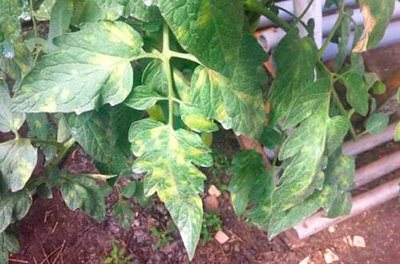

According to gardeners, the plant has high immunity. When grown outdoors, it is not susceptible to late blight.
But at the same time, there are cases when plants are infect: brown spot, tobacco mosaic.
Tobacco mosaic - a viral disease, if it is detected, the affected part must be immediately removed. Sections per plant are treated with a manganese solution or crushed activated carbon.
Brown spot or otherwise cladosporium. The disease can be detected even at the flowering stage.It is characterized by the appearance of a light green bloom on the inside of the leaves, and from above, at the initial stage of the development of the disease, the leaves are covered with light green spots. With the progression of the disease, the spots become light brown, at this stage it is more difficult to cope with the disease.
Copper oxychloride can be used to treat the disease. From folk remedies, you can use the treatment with a solution of milk and iodine, in the following proportion: 5 l - water, 0.5 l - milk, iodine - 15 drops.
Fruit
- According to the results of all harvests, the average weight of tomatoes is 400 grams, and the maximum figure is 700-800 grams. The record weight of one tomato is 1200 grams.
- The shape of the tomatoes resembles a slightly flattened heart, this corresponds to the reviews of those who planted the variety in their area. Fruits, as a rule, are all even, of good presentation. Ripe tomatoes have a raspberry pink color, they are very appetizing and attractive in appearance.
- On unripe tomatoes in the area of the stalk attachment, there is a green spot. With gradual ripening, the top of the tomato turns pinkish-yellow and only when fully ripe, the color becomes uniform.
- The pulp tastes very tender, melting in the mouth. The inside of the tomato is sugary with few seeds.
- This tomato variety is used mainly for salad. Ripe fruits do not lie for a long time, therefore, if the harvest is large, then they are allowed to be processed, that is, they make juice, lecho, tomato paste, pickle in pieces, pickle.

